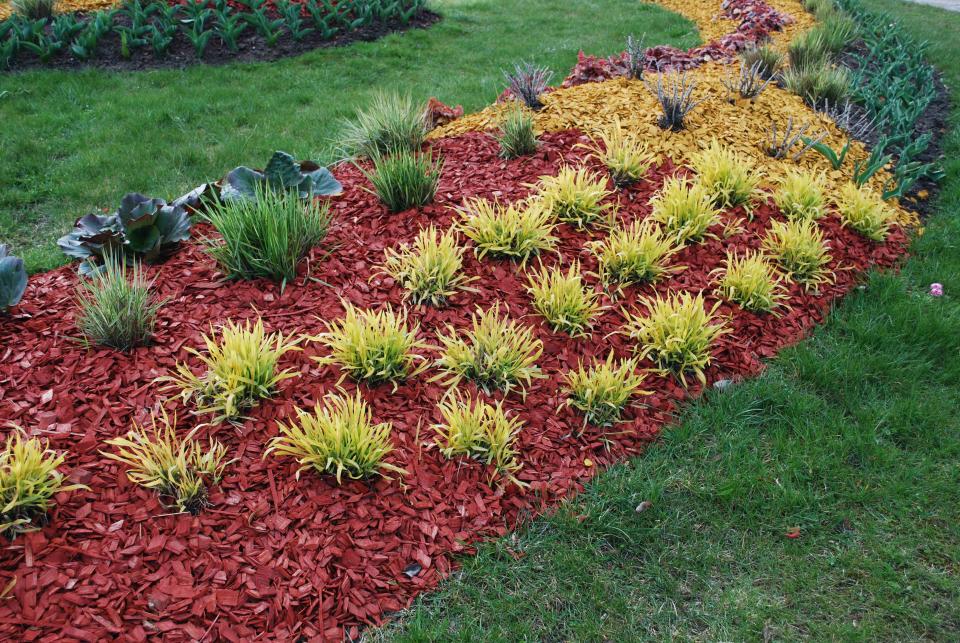8 Tips for Keeping Your Mulch in Place—Even in Bad Weather
How to maintain your mulch so it's permanently neat and tidy.

Svetlana Klaise/Getty Images
There’s a definite art to landscaping if your end-goal is to boost that curb appeal. Features like flowering or mature trees, flower-lined sidewalks, and a well-kept lawn all help with the wow-factor, and mulch is another item not to be underrated.
“By adding mulch to gardens, you’re mimicking what occurs naturally in ecosystems like forests, where organic materials such as leaves and pine needles fall to the ground and decompose, enriching the soil and supporting plant growth,” explains Amy Hovis, owner of Barton Springs Nursery and Eden Garden Design.
The tricky thing about using mulch, though, is that it tends to migrate over time. Big gusts of wind can sweep mulch away, and it can spread out and gradually break down, as well. Here’s how to keep mulch in place so it looks great and serves its job.
Related: How Much Mulch Do You Need for Your Garden?
Choose Heavy and Durable Mulch
Mulch that’s heavy and durable is less likely to fly away in the wind and takes longer to break down in the elements, explains Madeline Hooper, gardening expert and host of the PBS show GardenFit.
“To top beds in the sun, I suggest shredded hardwood, which is typically called bark mulch. It has good staying power and doesn’t break down so quickly. There is a lot to choose from,” Hooper says. “For rocky areas I use pea stone to protect my rock garden plants.”
Create Contours
Laying mulch on a slope is tricky since the pieces tend to migrate down versus staying in place. One way to combat this is to create swales or contours, which are gently sloping channels designed to capture and redirect surface water runoff. This helps slow down water flow, which reduces erosion and spread.
Edge Your Beds
Create a physical barrier around the perimeter of your mulched areas using stones, bricks, gravel, or custom steel or stone edging. Hovis explains that this keeps mulch in place by creating a barrier against rain and wind, preventing washout and displacement. It also maintains a neat appearance and reduces soil erosion.
Keep It Moist
Watering your mulch is a must. Erika Allen, CEO of the Urban Grower’s Collective, says, “The water helps weigh the mulch down and also activates the benefits of mulch itself. Be sure to adjust your watering accordingly based on the new increased water retention in the beds.” Aim for one to two inches of water per week, or as needed depending on rainfall.
Related: The Best Time to Water Grass for a Greener Lawn—and Less Water Waste
Use Mulch Netting
A biodegradable netting, like one made from burlap, can help prevent spread and erosion by creating a physical barrier against wind and water. Cut a piece of netting to the size of your garden and apply it over the entire mulched area, creating openings for plants as needed. Secure the netting with stakes.
Apply the Right Amount
Hovis says it’s important to apply the right amount of mulch in order for it to work properly. “Spread mulch to a depth of two to four inches,” she instructs. “Too thin a layer won’t provide benefits, while too thick can lead to rot and mold.” If the mulch becomes rotten, then you’ll need to remove it.
Check in Weekly
Even following the above tips, you’ll still want to check in on your mulch every week or two, or anytime you get some weather.
“This is especially after storms-or other breaks from your garden—to assess proactively what might be moving mulch out of the space,” Allen says. “It can be helpful to have an intentional separate walk through specifically to check-in on your mulch to make sure that it doesn’t get lost in other regular maintenance like weeding and watering.”
Reapply Annually
Mulch is organic matter, so it’ll naturally break down over time. That said, re-laying mulch is an annual project. Hovis recommends topping it off in the spring to help prepare for the upcoming growing season. Hooper adds that mulch can be pretty heavy; you can simplify the job by using two-gallon containers versus hauling the entire bag around.
The Benefits of Mulch
Mulch is a natural material, typically consisting of wood chips, bark, straw, pine needles, leaves, or other organic material that’s placed over the surface of soil to help retain moisture for plants. It also helps keep weeds at bay and improves ecosystems.
Mulch also creates a more uniform appearance in your landscaping. Allen says you can think of mulch as a layer of frosting on a cake. It keeps what’s underneath moist, but also looks beautiful.
You can choose different varieties, some with vibrant red tones or others with a rich chocolate brown hue. Of course, natural earthy hues are beautiful, too. Whatever you choose, mulch creates contrast against the grass and your plants, and can look more polished than soil.
Related: 10 Low-Maintenance Landscaping Ideas to Makeover Your Yard
For more Real Simple news, make sure to sign up for our newsletter!
Read the original article on Real Simple.


